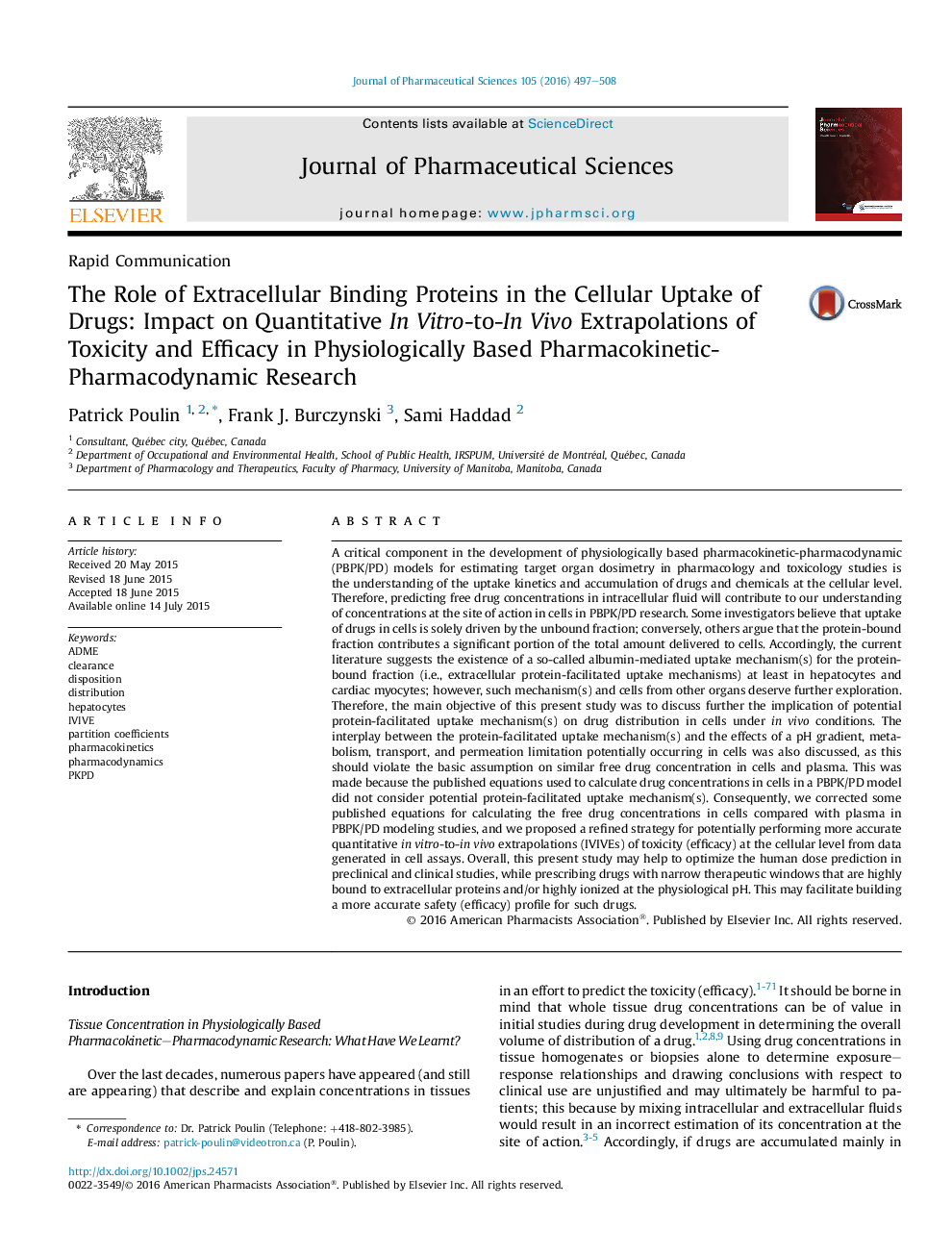| کد مقاله | کد نشریه | سال انتشار | مقاله انگلیسی | نسخه تمام متن |
|---|---|---|---|---|
| 2484249 | 1114305 | 2016 | 12 صفحه PDF | دانلود رایگان |
عنوان انگلیسی مقاله ISI
The Role of Extracellular Binding Proteins in the Cellular Uptake of Drugs: Impact on Quantitative In Vitro-to-In Vivo Extrapolations of Toxicity and Efficacy in Physiologically Based Pharmacokinetic-Pharmacodynamic Research
دانلود مقاله + سفارش ترجمه
دانلود مقاله ISI انگلیسی
رایگان برای ایرانیان
کلمات کلیدی
موضوعات مرتبط
علوم پزشکی و سلامت
داروسازی، سم شناسی و علوم دارویی
اکتشاف دارویی
پیش نمایش صفحه اول مقاله

چکیده انگلیسی
A critical component in the development of physiologically based pharmacokinetic-pharmacodynamic (PBPK/PD) models for estimating target organ dosimetry in pharmacology and toxicology studies is the understanding of the uptake kinetics and accumulation of drugs and chemicals at the cellular level. Therefore, predicting free drug concentrations in intracellular fluid will contribute to our understanding of concentrations at the site of action in cells in PBPK/PD research. Some investigators believe that uptake of drugs in cells is solely driven by the unbound fraction; conversely, others argue that the protein-bound fraction contributes a significant portion of the total amount delivered to cells. Accordingly, the current literature suggests the existence of a so-called albumin-mediated uptake mechanism(s) for the protein-bound fraction (i.e., extracellular protein-facilitated uptake mechanisms) at least in hepatocytes and cardiac myocytes; however, such mechanism(s) and cells from other organs deserve further exploration. Therefore, the main objective of this present study was to discuss further the implication of potential protein-facilitated uptake mechanism(s) on drug distribution in cells under in vivo conditions. The interplay between the protein-facilitated uptake mechanism(s) and the effects of a pH gradient, metabolism, transport, and permeation limitation potentially occurring in cells was also discussed, as this should violate the basic assumption on similar free drug concentration in cells and plasma. This was made because the published equations used to calculate drug concentrations in cells in a PBPK/PD model did not consider potential protein-facilitated uptake mechanism(s). Consequently, we corrected some published equations for calculating the free drug concentrations in cells compared with plasma in PBPK/PD modeling studies, and we proposed a refined strategy for potentially performing more accurate quantitative in vitro-to-in vivo extrapolations (IVIVEs) of toxicity (efficacy) at the cellular level from data generated in cell assays. Overall, this present study may help to optimize the human dose prediction in preclinical and clinical studies, while prescribing drugs with narrow therapeutic windows that are highly bound to extracellular proteins and/or highly ionized at the physiological pH. This may facilitate building a more accurate safety (efficacy) profile for such drugs.
ناشر
Database: Elsevier - ScienceDirect (ساینس دایرکت)
Journal: Journal of Pharmaceutical Sciences - Volume 105, Issue 2, February 2016, Pages 497-508
Journal: Journal of Pharmaceutical Sciences - Volume 105, Issue 2, February 2016, Pages 497-508
نویسندگان
Patrick Poulin, Frank J. Burczynski, Sami Haddad,